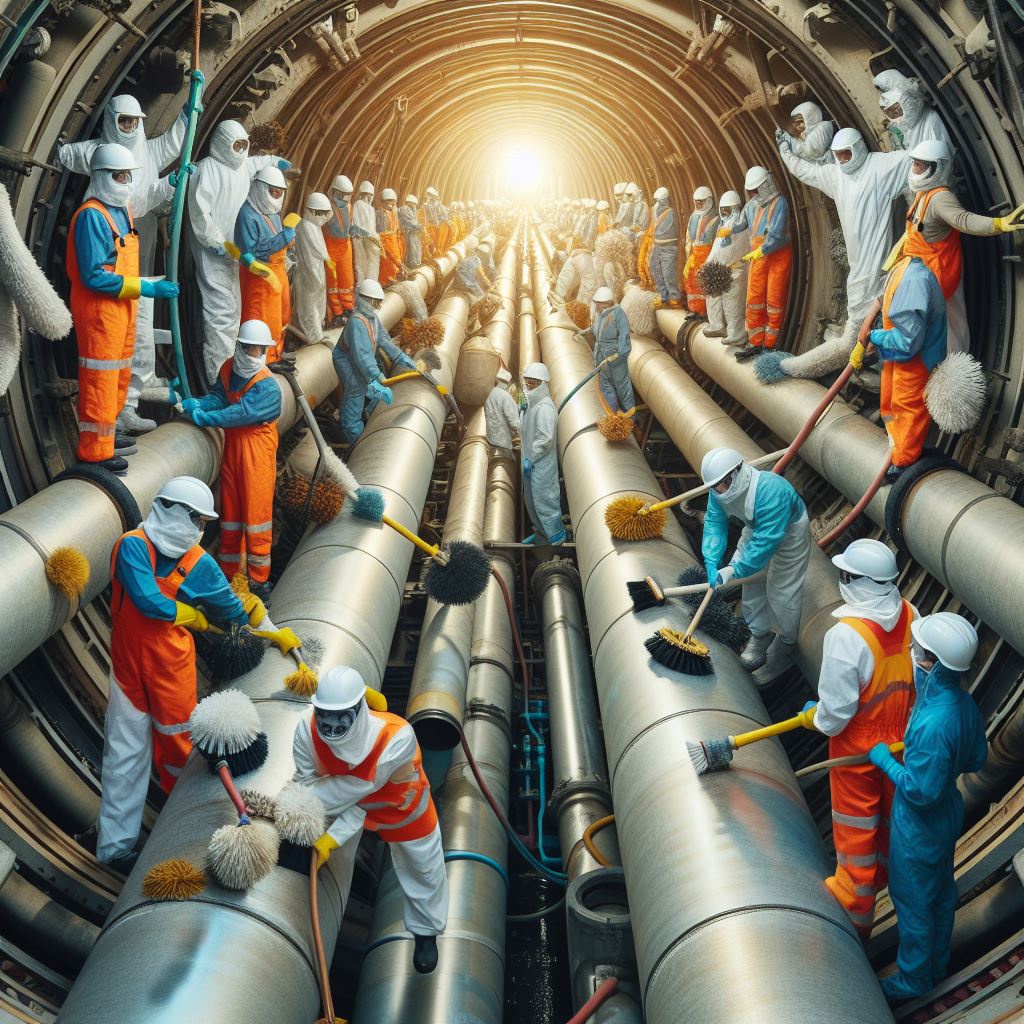Pipelines are the lifeblood of countless industries in the United States, transporting everything from oil and gas to water and chemicals. But like any workhorse, these pipelines can accumulate debris and build-up over time. This can lead to a number of problems, impacting efficiency, safety, and even causing costly downtime.
Key Highlights
- Watch for signs of a dirty pipeline: Reduced flow rates, increased pressure, unusual vibrations, product contamination, and unexpected equipment issues all indicate your industrial pipelines need cleaning.
- Regular cleaning prevents costly problems: Preventative pipeline cleaning minimizes downtime, ensures product quality, and extends the lifespan of your system.
- Choose the right cleaning service: Look for experienced professionals who use safe and effective methods to clean your specific type of pipeline.
We May Charge Commission on Links
Picture Credit Goes to Flowmore Industrial Pipeline Cleaner
So, how do you know if your industrial pipeline needs cleaning? Here's a breakdown of the telltale signs that it's time to call in the professionals for cleaning your industrial pipelines:
Decreased Flow Rates:
One of the most noticeable signs of a dirty pipeline is a reduction in flow rate. This happens because buildup restricts the passage of the material being transported. Imagine a garden hose with a kink in it – the water flow weakens. In an industrial setting, this can lead to production delays, missed deadlines, and potential revenue loss.
Increased Pressure:
If your pumps are working harder than usual to maintain flow, it could be a sign of a clogged pipeline. The buildup acts like a dam, forcing the pumps to exert extra pressure to push the material through. This not only puts unnecessary strain on your equipment but can also lead to leaks and potential safety hazards.
Unusual Vibrations:
Pipelines are designed to operate with minimal vibration. However, if you're noticing excessive shaking or rattling, it could be caused by debris or build-up disrupting the flow within the pipe. This can damage the pipeline itself and connected equipment if left unchecked.
Product Contamination:
Pipeline cleaning is crucial for maintaining product quality. When a pipeline is dirty, contaminants like rust, scale, or old product residue can mix with the current product being transported. This can render the product unusable or even hazardous, leading to costly disposal and potential recalls.
Energy Inefficiency:
Dirty pipelines force pumps and other equipment to work harder, leading to increased energy consumption. This translates to higher utility bills and a larger environmental footprint. Regular cleaning can help your operation become more energy-efficient, saving you money and reducing your impact on the environment.
Unexpected Equipment Issues:
Clogged pipelines can wreak havoc on your entire system. Increased pressure and vibrations can lead to premature wear and tear on pumps, valves, and other equipment. This can result in unexpected breakdowns, unplanned maintenance, and further production delays.
Preventive Maintenance:
Even if you're not experiencing any of the problems mentioned above, it's wise to schedule regular pipeline cleaning as part of your preventive maintenance plan. This proactive approach helps prevent problems before they occur, minimizing downtime and ensuring the smooth operation of your entire system.
Finding the Right Pipeline Cleaning Service:
When it comes to pipeline cleaning, choosing the right service provider is crucial. Look for a company with experience in your specific industry and the type of pipeline you operate. They should utilize safe and effective cleaning methods, have a proven track record, and prioritize safety and environmental responsibility.
Don't Wait Until There's a Problem:
By recognizing the signs of a dirty pipeline and taking action promptly, you can avoid costly disruptions, maintain product quality, and ensure the long-term health of your entire system. Remember, a clean pipeline is an efficient pipeline!
Additional Tips:
- Keep Detailed Records: Maintain a record of your pipeline cleaning history, including the date, type of cleaning performed, and any observations made. This can help you identify trends and determine the optimal cleaning frequency for your specific pipeline.
- Invest in Quality Equipment: Consider investing in pipeline cleaning pigs or other cleaning tools suitable for your system. These can be used in conjunction with professional cleaning services for a more comprehensive approach.
- Train Your Personnel: Providing your staff with basic pipeline maintenance training can help them identify potential problems early on and ensure the safe operation of your system.
Conclusion
Keeping your industrial pipelines clean is an investment in the smooth operation and long-term health of your entire system. By recognizing the warning signs of a dirty pipeline – reduced flow rates, increased pressure, unusual vibrations, product contamination, energy inefficiency, and unexpected equipment issues – you can take proactive steps to prevent costly downtime and ensure the quality of your product.
Remember, preventive maintenance is key. Schedule regular pipeline cleaning as part of your routine, and consider investing in cleaning tools and training your personnel for added vigilance. Choosing a qualified and experienced pipeline cleaning service provider will further ensure a safe and effective cleaning process.


No comments yet